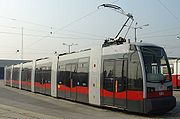Electric Mobility
Appearance

| |||||
Electric vehicles around the world (from top left):
|
Subtopics
[edit | edit source]This learning resource introduces you to electric mobility (e-mobility). There are 5 main constituents that structure this learning resource:
- (Battery) Battery Technology for long-distances, temperature and the availability for different types of vehicles.
- (Engineering) Engineering of non-electric and non-IT-parts of the vehicle
- (ICT in Vehicles) Information and Communication Technology in vehicles are used for navigation, safety, traffic management, entertainment, ...
- (Electricity Supply and Infrastructure) Electric vehicle solutions need a network and supply infrastructure equivalent to gasoline stations. Analyse fraction of engery supply for electric mobility, which is affordable and clean according to SDG7!
- (Container Design Principle)
- (Miscellaneous) including innovation, environmental and the socio-economic aspects of the innovation.
Learning Task
[edit | edit source]- (Electric Vehicle Types) Explore the different types of electric vehicles.
- (From Fossile to Electric) Identify the number parts necessary to produce car with gasoline propulsion in comparison to an electric car. What are your conclusions about the number of workers needed and the supply chain management for the industry.
- (Cars and IT) Compare the two concepts:
- A car is a computer that is able to move
- A car is a vehicle that has IT-components to maximise efficiency and power of propulsion and support navigation.
- How do you see the future of cars and mobility in general after analysis of current developments. Discuss in your learning group benefits, challenges and obstacles for future of mobility for people and cargo (e.g. according to interoperability public transport, shared economy, autonomous driving, ...).
- (Fuel Cell) Analyse the concept of Fuel Cell and describe how this concept is relevant for electric mobility.
- (Battery) What are current challenges in the area of batteries (e.g. loading, replacement, necessary resources for the battery production). Replace all fossile fuel cars on earth with electric cars with batteries: Do we have enough resources for the batteries?
- (e-Car - Public Transport Comparison) Cars have a dominant role in the mobility concept and car production is of economic importance for employment. Compare e-mobility with cars and individual transport systems with a public transport system and approaches of the sharing economy!
- (Free Public Transport) Would it be possible to establish a free public transport and finance the cost by taxes? Estimate the impact on the car production and on the car companies! Less people are necessary in car industry, if we move from fossile fuel cars to electric cars. Explain why? If many people will loose their jobs in car industry, can people be employed in the free public transport system and in maintenance of the public transport infrastructure? Is it possible to use cars for the last mile to destination only?

- (Trains on the Road?) Road trains e.g. in Australia are long trucks with large amount of cargo load with a single driver. Trains on rails can be much longer with just one drives and the tracks can be electrified without the need of batteries. What are the PROs and CONs to bring the train concept (Platooning) on the road. Include the concept of autonomous driving into your concept. Compare autonomous driving on rails with autonomous driving on roads! Which scenario is more challenging and why?
See also
[edit | edit source]- This topic is linked to sustainable developing goals from the following list. Explain why electric mobility can contributed to the SDGs mentioned below
- Wikipedia:Renewable Energy
- Sharing Economy
- Platooning
- Engineering Projects/Electric Cars
References
[edit | edit source]- ↑ UN-Guidelines for Use of SDG logo and the 17 SDG icons (2016/10) - http://www.un.org/sustainabledevelopment/wp-content/uploads/2016/10/UN-Guidelines-for-Use-of-SDG-logo-and-17-icons.October-2016.pdf
- ↑ Info Box of images about electic vehicles are imported from Wikipedia:electric vehicle by application of Wikipedia2Wikiversity Tool










